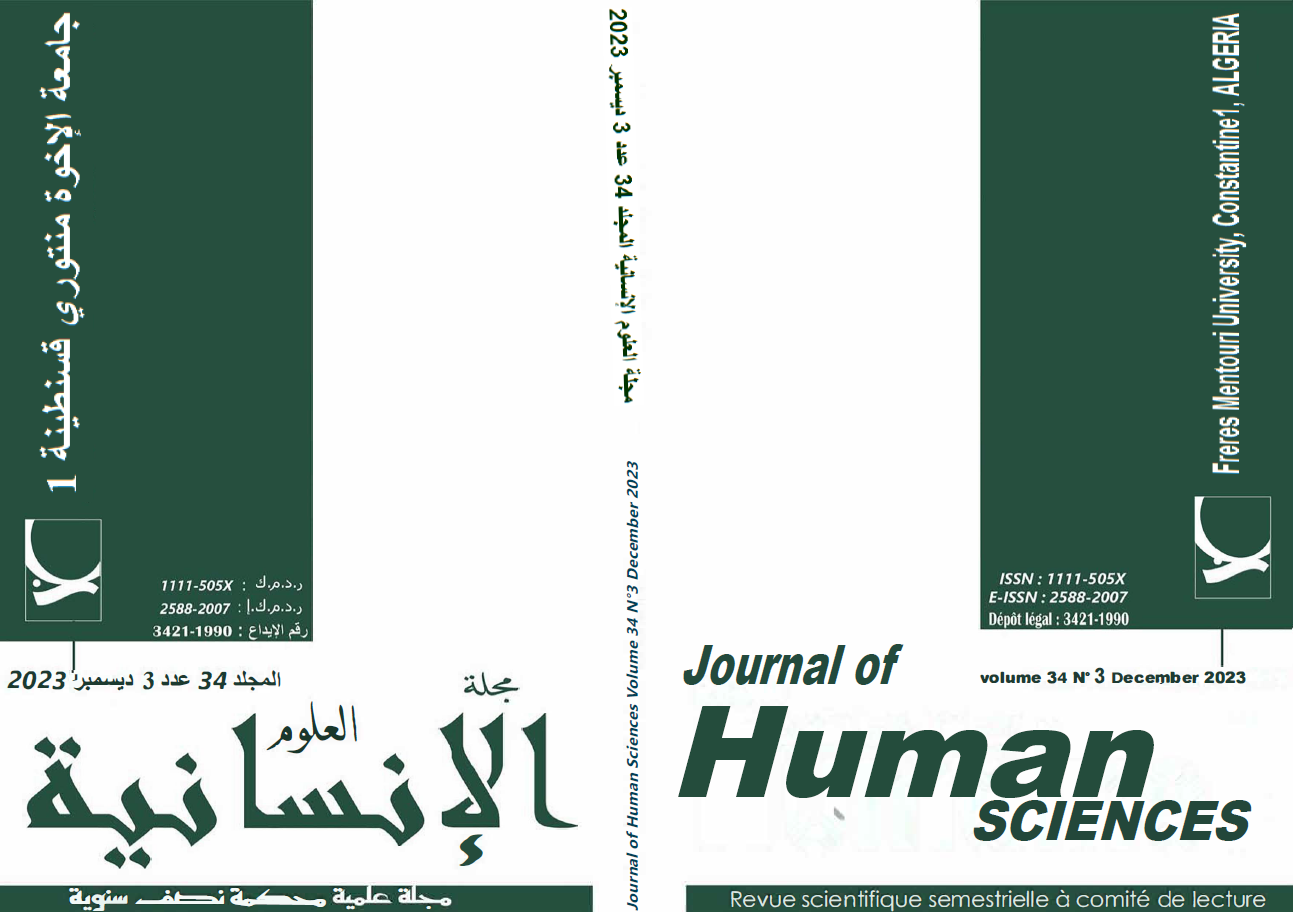Facteurs déterminant l’attitude de l’enseignant envers l’enseignement en ligne
Mots-clés :
Attitude de l’enseignant, Enseignement en ligne, Perception de la facilité d’utilisation d’une technologie, TIC, Enseignement supérieurRésumé
La désaffection des enseignants à l’enseignement en ligne est connue à travers les universités du monde entier. Nous tentons par cette étude d’identifier les facteurs susceptibles d’être à l’origine de ce phénomène. En nous basons sur le modèle d’acceptation d’une technologie de Davis, nous avons mené une étude par questionnaire auprès d’un groupe d’enseignants à l’université, ayant expérimenté l’enseignement en ligne, en mesurant leurs attitudes envers ce mode d’enseignement avant et après l’expérience. Malgré la formation technique reçue au début, les résultats montrent que le taux d’enseignants percevant des difficultés dans l’enseignement en ligne a significativement augmenté après l’expérience et une attitude négative est notée chez la majorité des enseignants. Une forte relation de dépendance, statistiquement significative, entre cette attitude négative et les difficultés de type pédagogique rencontrées a était identifiée.
Téléchargements
Références
. Adebo, P. (2018). Online teaching and learning. International Journal of Advanced Research in Computer Science and Software Engineering, 8, 73. https://doi.org/10.23956/ijarcsse.v8i2.549
. Albero, B. (2000). L’autoformation dans les dispositifs de formation ouverte et à distance : Instrumenter le développement de l’autonomie dans les apprentissages. Les TIC au cø eur de l’enseignement supérieur, 139‑159. https://edutice.archives-ouvertes.fr/edutice-00000270/
. Albero, B. (2011). Le couplage entre pédagogie et technologies à l’université : Cultures d’action et paradigmes de recherche. Revue internationale des technologies en pédagogie universitaire, 8(1‑2), 11. https://doi.org/10.7202/1005779ar
. Azmi, C., & Widiaty, I. (2021). ICT-based e-learning implementation. IOP Conference Series: Materials Science and Engineering, 1098, 022109. https://doi.org/10.1088/1757-899X/1098/2/022109
. Bandura, A. (1982). Self-efficacy mechanism in human agency. American Psychologist, 37(2), 122‑147. https://doi.org/10.1037/0003-066X.37.2.122
. Bandura, A. (1997). Self-efficacy : The exercise of control. (p. ix, 604). W H Freeman/Times Books/ Henry Holt & Co.
. Ben Abid-Zarrouk, S. (2011). Une analyse de l’équité d’un enseignement en ligne. Distances et savoirs, 9(1), 97‑129. Cairn.info.
. Chi, V. T. L., & Yen, P. H. (2022). Vietnamese high school efl teachers’ perceptions toward online teaching under the impact of COVID-19. European Journal of English Language Teaching, 7(4). https://doi.org/10.46827/ejel.v7i4.4412
. CLIFAD. (2007). Soixante ans de formation à distance au Québec. https://www.sofad.qc.ca/media/60_ans_fd.pdf
. Davis, F. (1993). User acceptance of information technology : System characteristics, user perceptions and behavioral impacts. International Journal of Man-Machine studies n° 38, 38, 475‑487.
. Duguet, A., Morlaix, S., & Pérez, W. (2019). Utilisation du numérique par les enseignants à l’université : Description et analyse des facteurs explicatifs. Lien social et Politiques, 81, 192‑211. https://doi.org/10.7202/1056311ar
. Graham, C. R., Henrie, C. R., & Gibbons, A. S. (2014). Developing models and theory for blended learning research. In A. G. Picciano, C. D. Dziuban, & C. R. Graham (Éds.), Blended Learning : Research Perspectives (Vol. 2, p. 13‑33). New York, NY: Routledge. https://www.routledge.com/Blended-Learning-Research-Perspectives-Volume-2/Picciano-Dziuban-Graham/p/book/9780415632515
. Karsenti, T., Peraya, D., & Viens, J. (2002). Conclusion : Bilan et prospectives de la recherche sur la formation des maîtres à l’intégration pédagogique des TIC. Revue des sciences de l’éducation, 28(2), 459‑470.
. Karsenti, T., Savoie-Zajc, L., & Larose, F. (2001). Les futurs enseignants confrontés aux TIC : Changements dans l’attitude, la motivation et les pratiques pédagogiques. Éducation et francophonie, 29(1), 1‑29.
. Kim, H.-C. (2015). Acceptability Engineering : The Study of user Acceptance of Innovative Technologies. Journal of Applied Research and Technology, 230‑237. https://doi.org/10.1016/j.jart.2015.06.001
. Lakhal, S., Bilodeau, R. C., & Harvey, C. (2015). Les modalités de cours qu’on peut exploiter au collégial : Les définir pour mieux les choisir. Pédagogie Collégiale, 28(3), 28‑34.
. Lepper, M. R. (1988). Motivational Considerations in the Study of Instruction. Cognition and Instruction, 5(4), 289‑309. https://doi.org/10.1207/s1532690xci0504_3
. Marchand, L., & Loisier, J. (2005). L’université et l’apprentissage en ligne, menace ou opportunité. Revue des sciences de l’éducation, 29(2), 415‑437. https://doi.org/10.7202/011040ar
. Messaoui, A., Redondo, C., Molina, G., & Pironom, J. (2021). Impact du confinement sur les pratiques pédagogiques dans l’enseignement universitaire technologique en France : Une étude exploratoire. Revue internationale des technologies en pédagogie universitaire, 18(3), 1‑16. https://doi.org/10.18162/ritpu-2021-v18n3-01
. Nucci-Finke, C. (2015). Les enseignants et le e-learning. Paris Ouest.
. Paivandi, S., & Espinosa, G. (2013). Les TIC et la relation entre enseignants et étudiants à l’université. Distances et médiations des savoirs. Distance and Mediation of Knowledge, 1(4), Article 4. https://doi.org/10.4000/dms.425
. Peraya, D. (2003). De la correspondance au campus virtuel : Formation à distance et dispositifs médiatiques. Technologie et innovation en pédagogie. Dispositifs innovants de formation pour l’enseignement supérieur, 79‑92.
. Peraya, D. (2011). La posture de l’enseignant porteur d’un projet technopédagogique : Complexité et déplacements. http://archive-ouverte.unige.ch/unige:16906
. Peraya, D. (2012). Un regard sur la «distance», vue de la «présence». Distances et savoirs, 9(3), 445‑452.
. Peraya, D. (2015). Professionnalisation et développement professionnel des enseignants universitaires : Une question d’actualité. Distances et médiations des savoirs. Distance and Mediation of Knowledge, 3(10). https://dms.revues.org/1094
. Rabardel, P., & Samurçay, R. (2001). From artifact to instrument-mediated learning. Symposium on New challenges to research on Learning, 21‑23.
. Redondo, C., & Messaoui, A. (2022). Ajustements didactiques et pédagogiques en contexte post-Covid 19 pour les enseignants d’institut universitaire de technologie. Contextes et didactiques. Revue semestrielle en sciences de l’éducation, 19, Article 19. https://doi.org/10.4000/ced.3514
. Saunier, É. (2022). Former et accompagner les élèves en contexte de confinement. Rapports aux temps et au métier des enseignants dans le premier et le second degré en France. Contextes et didactiques. Revue semestrielle en sciences de l’éducation, 19, Article 19. https://doi.org/10.4000/ced.3690
. Singh, H. (2003). Building Effective Blended Learning Programs. Educational Technology, 43(6), 51‑54.
. Weiss, P.-O., & Issaieva, É. (2022). L’École a-t-elle résisté au séisme du COVID-19 ? Contextes et didactiques. Revue semestrielle en sciences de l’éducation, 19, Article 19. https://journals.openedition.org/ced/3800
Téléchargements
Publié-e
Comment citer
Numéro
Rubrique
Licence
© Revue des Sciences Humaines 2023

Cette œuvre est sous licence Creative Commons Attribution - Pas d'Utilisation Commerciale 4.0 International.

















